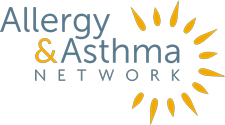Those with allergies and asthma have long battled dust in the home. Now there is new evidence that provides added incentive to clean up, and be aware of what products can be creating toxins.
In 2015, scientists from George Washington University, the Silent Spring Institute, Natural Resource Defence Council, Harvard University, and the University of California – San Francisco embarked on the first study to comprehensively assess consumer product chemicals of concern in indoor dust, provide a picture of toxic chemicals in the home, and estimate potential exposures for children.
In the study, which was released last week and reported on by CNN and CBS News, among others, 90 percent of dust samples tested in 14 states contained 10 toxic chemicals. Phthalates, used to increase flexibility in toys and plastic products, occurred in the highest concentrations; phthalates are believed to cause cancer and are linked to respiratory and cognitive problems in children.
Also found were phenols, often used in cleaning products, and flame retardants, fragrances and perflouroalkyl substances, which are used in carpets, textiles, and leather to make them water-, oil- and stain-repellent and to create grease-proof and waterproof coatings for products such as paper plates and food packaging.
“What we found is the surprising reality that our homes are being polluted by the products we have every day,” Veena Signla, staff scientist at the Natural Resource Defence Council said.
When dust comes into the home, it settles. Offgasses from everyday products such as flooring, furniture, cleaning supplies and plastic products travel through the air as well, and then get absorbed in the dust. The chemicals can be inhaled or ingested.
The authors of the study, published in the journal Environmental Science & Technology, were especially concerned about exposure to children.
“The findings suggest that people, and especially children, are exposed on a daily basis to multiple chemicals in dust that are linked to serious health problems,” says lead author Dr. Ami Zota, assistant professor at George Washington University Milken Institute School of Public Health.
Natural product alternatives that do not contain these chemicals are available, but they are difficult to find – call manufacturers or search online. However, many products already in your home may contain the chemicals.
To help reduce your risk of exposure, make sure you wash your hands regularly and take traditional steps to reduce dust.
For further insurance against these toxins, HomeLab identifies both dust particulates and toxic VOCs. Their experts will review your home and identify potentially toxic chemicals. Learn more about how it works here.

 810304 Eaton Place, Suite 100
810304 Eaton Place, Suite 100